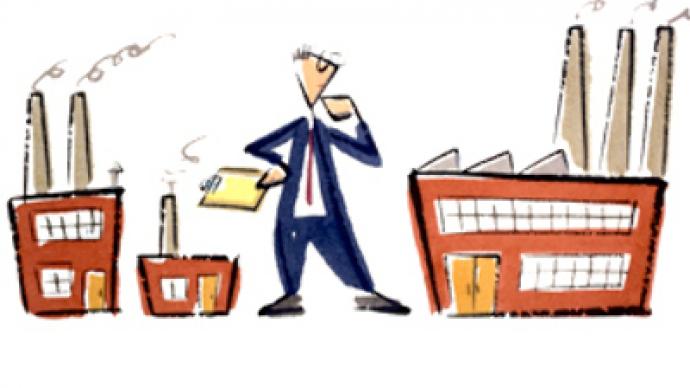Industrial Output down 14.9% January to April

Russian industrial output was down 14.9% year on year between January and April according to Russia’s Federal State Statistics Service.
The downturn accelerated in April with the month being down 16.9% year on year and 8.1% compared with March 2009. The data indicates the magnitude of Russia’s economic woes, with global commodity prices beginning to rebound in the first four months of the year, and amidst increasing optimism that the worst of the financial crisis is over with interbank lending rates returning to levels not seen since the demise of Lehman Brothers in September 2008.
The heavier than expected drop was driven by falls in manufacturing output, which was down 25.1% year on year in April, as sectors exposed to investment falls bore the brunt of the downturn – with steel production, cement and construction materials recording 30%+ falls year on year, and automotive production slumping more than 60%. Mitigating this to a limited extent were gains in food production with cereal production up more than 23% year on year, meat up 12.7% and dairy products up 4%.
Analysts say the falls indicate that the Russian economy is still some distance from recovery, with UniCredit’s Head of Strategy and Research, Vladimir Osakovsky, expecting further output declines and tentative steps towards recovery only much later this year.
“Actually, today, we don't have real preconditions for growth and the downward trend will continue up to the point of a 20% fall. We can't rely on the domestic consumer demand. The only thing that can help us is domestic demand from investors. It could be stimulated by massive sales of the natural resources like gas and oil abroad. However, if we talk about y-o-y positive movements in industrial output, I expect it at the end of this year. If we take month – to – month indicators, the output could bottom out this autumn.”
The data is also reigniting debate about the outlook for the Rouble with some analysts suggesting that the magnitude of the falls means that the Government will be forced into a further easing of monetary policy, and weakening of the Rouble.
However, Elena Sharipova, Senior Economist from Renaissance Capital, believes Russia's Central Bank will keep Rouble stable, but adds that so far Government policy has proved inefficient.
“In fact, the Rouble devaluation didn't have the expected results. It didn't make national products competitive enough. So, I expect the Central Bank will keep our national currency at the rate of 32 – 35 Roubles per dollar until the end of 2009.
Talking about Government aid for the economy, it didn't have much effect. The Government didn't manage to push the real economy, to stabilize it at the core. It was all about just injecting money mostly into the banking sector instead of stimulating demand.”
Sharipova added that the outlook was largely dependent on energy exports, saying that if these remained buoyant, or pushed higher then the economic outlook improved. Clemens Grafe, Chief economist at UBS Moscow also linked the outlook to commodity exports, which although higher than in February and March, are still quite volatile, and lend a note of caution to any further easing or stimulus moves by the state.
“Russia's Government is right not to inject too much money into the economy. Today it is cautious, because revenues heavily depend on exports which are extremely volatile now.”
But Grafe has a more optimistic outlook on industrial production, saying “Today the drop is over, we are at the bottom now,’












